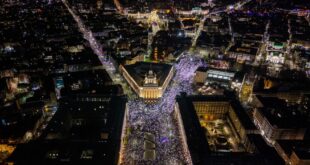At least 900 housing units are to be built over the next three years for the most vulnerable refugees, mostly Roma displaced from Kosovo in the war of the late 1990s.
After spending more than a decade in substandard collective centres, thousands of refugees in Montenegro are to get improved accommodation over the next three years.
The Montenegrin government, with foreign donor support, has launched a programme for re-housing displaced persons, which envisages the construction of at least 900 housing units.
It is estimated that the programme will cost about 27 million euro. The government will cover about 15 per cent of the funds.
According to government data from December 2012, around 16,000 wartime refugees from Croatia, Bosnia and Kosovo live in Montenegro. Around 11,000 are from Kosovo. Over 3,000 are .
On Monday, the head of Montenegro’s Bureau for Refugee Care, Zeljko Sofranac said the most vulnerable refugees were ethnic Roma, Ashkali and Egyptians.
“They all require higher sensitivity and greater support for inclusion in Montenegrin society,” he said.
“The government, with the help of [UN refugee agency] UNHCR, has prepared a draft programme of support to those people, which requires donor funding,” he added.
Most of the refugees have not resolved their legal status in Montenegro. In order to secure the right to work, education, welfare and health care, they need to obtain ‘resident foreigner’ status.
Montenegro has one of the strictest citizenship regimes in the region and it also prohibits dual citizenship. Since the 1990s, only about 1,000 refugees have been granted Montenegrin citizenship.
The problem is particularly acute among Roma refugees who fled Kosovo in 1999, some of whom have no identity documents to even apply for foreigner status. Others possess the documents but have not tried to apply for residency.
The interior ministry has warned that refugees must apply for permanent residence status at some point, or risk being classed as illegal immigrants.
 Eurasia Press & News
Eurasia Press & News

